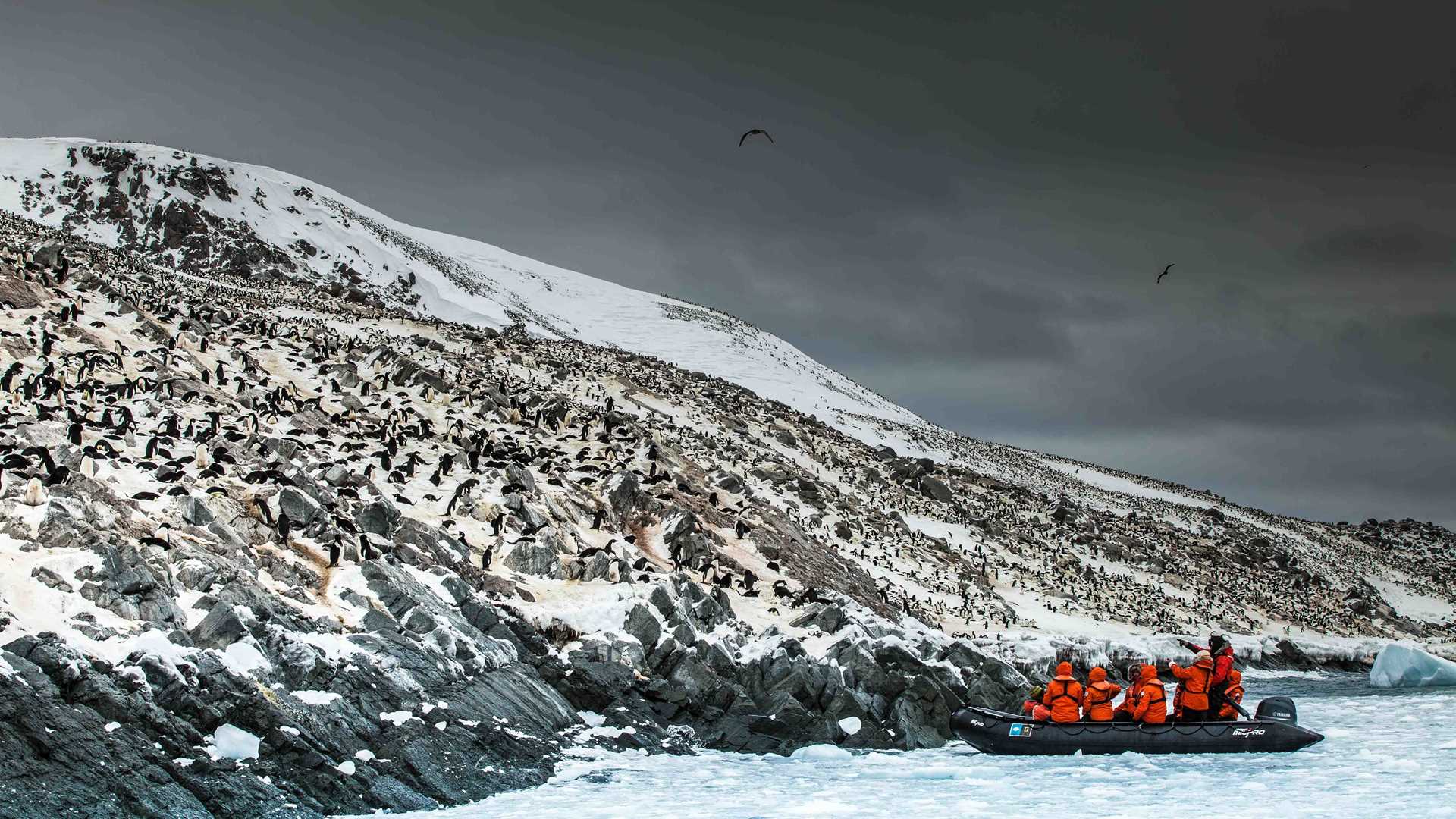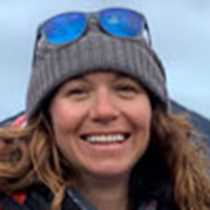We woke up to a strange feeling: calm seas! The ship’s motion had let up, and we were treated to a quiet morning on approach to the Weddell Sea. The further we sailed, the larger the icebergs became until we were surrounded by tabular bergs dotted with deep blue cracks.
Before our first presentation, we spent time with a fin whale and got close enough to see its smooth back and the white markings on its face. This is the second largest whale in the world.
Jimmy White regaled us with stories of his fieldwork and encouraged us to think about where animals go during the rest of their lives when they are out of sight from us. He explained that we can attach new technologies, such as satellite tags, to a variety of different organisms, piggybacking on their travels to uncover new stories of our planet.
Then, Elise Lockton told us the Shackleton story. Ernest Shackleton’s leadership through one of the most gripping survival tales of all time is a legend down here, and she told it with rich imagery and detailed research. We are nearing some of the landmarks that were key to Shackleton’s voyage, so the timing was perfect.
And after lunch, we braved the Danger Islands.
This small group of islands is home to 750,000 breeding pairs of
Before dinner, our ship cruised around an enormous tabular berg. With the ship so close, we could examine its glossy surface and watch it stretch away into the mist.









